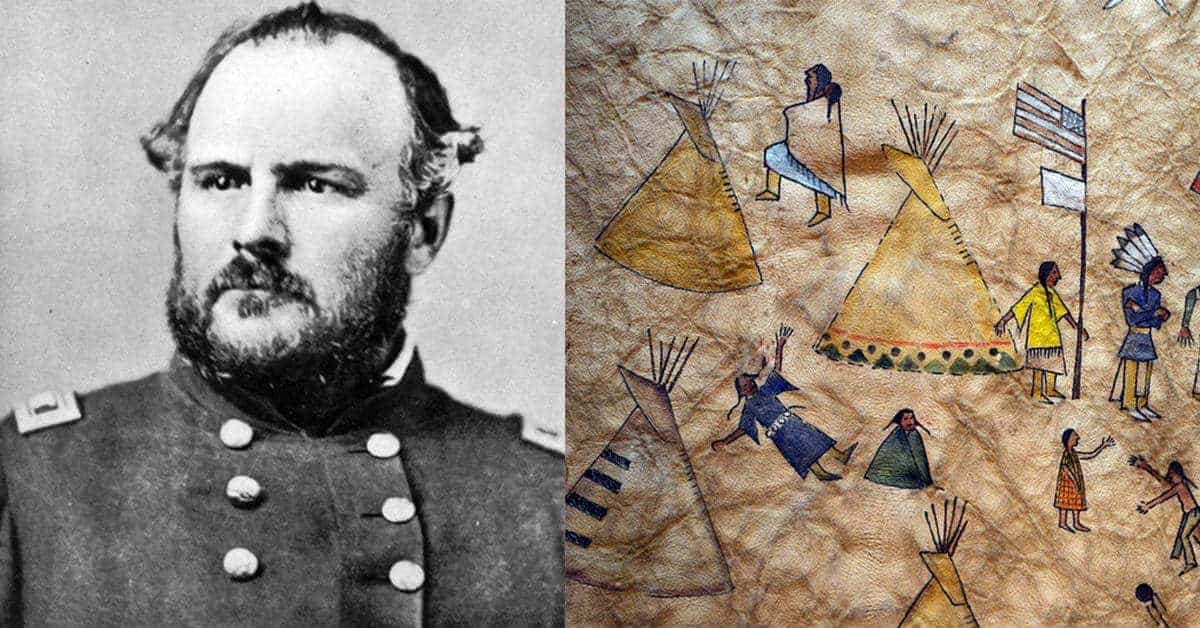Colonel Chivington led a force of approximately 700 men overnight to the Southern Cheyenne and Arapaho camp at Sand Creek, arriving on the morning of November 29, 1864. Major Anthony, now with a sufficient force to attack, commanded 125 troops of the Colorado First from Fort Lyon. Lieutenant Wilson led a further 125 men of the Colorado First, and Colonel Shoup led 450 men of the Colorado Third.
The camp at Sand Creek contained approximately 100 lodges and an estimated 500 Indians were residing there under the assumed protection of the U.S. Army. At the time of the attack, the vast majority of the warriors were out hunting. The males who stayed at the camp were either too young or too old to hunt. The remainders were women and children.
On seeing hundreds of soldiers on horseback riding towards the camp, Black Kettle hoisted a large American flag, with a smaller white flag tied to it, over his lodge, which had been given to him by the Commissioner of Indian Affairs, A. B. Greenwood four years earlier. Greenwood had told Black Kettle to raise this flag when approached by soldiers to indicate that they were peaceful. Special Indian agent and interpreter, John Smith, who was camped with the Indians at Sand Creek at the time of the attack, ran out to the oncoming soldiers, but instead of stopping, they opened fire.
Cheyenne chief White Antelope, also ran out, waving his hands frantically, shouting for the soldiers to stop, before realizing the futility of his efforts, stood, arms folded, chanting his death song before being shot and killed. The troops scalped his head and cut off his ears and nose. The small number of warriors fought as best they could to hold off the attack, so that others, including Black Kettle, could escape.

Andrew J. Gill, a volunteer aid to Chivington later testified in a military investigation into the massacre at Sand Creek that Chivington gave a speech just prior to the attack where he said, “Now boys, I shan’t say who you shall kill, but remember our murdered women and children.” Captain Silas Soule, who opposed Chivington’s attack against peaceful Indians, refused to take part in the fighting and ordered his men not to fire.
Soule recounted in a letter written to Major Wynkoop a couple of weeks after the massacre, that he had witnessed little children, who were on their knees surrendering, having their “brains beaten out” by soldiers, and a wounded squaw having her arm cut off with a hatchet while trying to defend herself before the soldier “dashed the hatchet through her brain.”
The subsequent investigations into the massacre revealed other atrocities carried out on the day. One eye witness reported seeing an Indian child of about three years old, “perfectly naked,” who was walking behind the Indians who were fleeing the attack, being shot at by three different soldiers in turn before the “little fellow dropped.”

